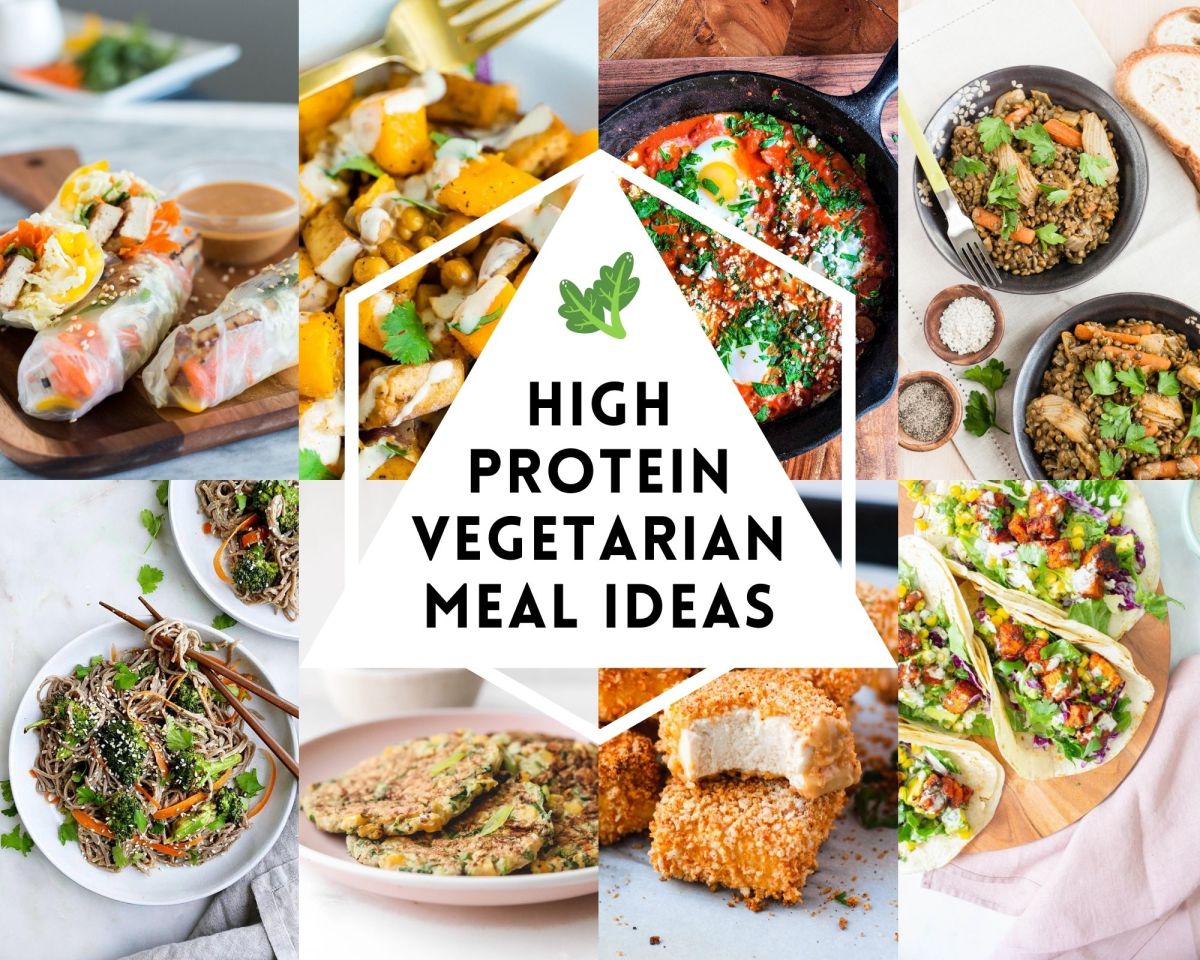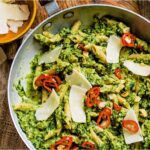Embark on a culinary journey exploring the vibrant world of flexitarian cuisine! This guide unveils the delightful art of balancing plant-based goodness with the power of protein, creating meals that are both nutritious and incredibly flavorful. We’ll delve into diverse recipe categories, showcasing the harmonious blend of vegetables, legumes, and lean protein sources. Discover innovative cooking techniques that enhance both texture and nutritional value, and learn how to effortlessly adapt recipes to suit your dietary preferences and needs. Prepare to be inspired by a collection of recipes designed to tantalize your taste buds and nourish your body.
From Mediterranean sun-drenched dishes to the aromatic spices of Asian cuisine and the fiery zest of Mexican flavors, we’ll explore a spectrum of global culinary traditions, each adapted to embrace the flexitarian lifestyle. Learn to master the art of ingredient substitution, ensuring that your meals remain delicious and adaptable, regardless of dietary restrictions or ingredient availability. We’ll also provide a practical weekly meal plan, simplifying your culinary journey and offering a balanced and exciting approach to healthy eating.
Recipe Development
Crafting delicious and nutritious flexitarian meals requires careful consideration of both flavor and nutritional balance. The following recipes demonstrate how to achieve this harmony by integrating plant-based ingredients with lean protein sources to create satisfying and healthy dishes. Each recipe showcases a distinct culinary profile, highlighting the versatility of the flexitarian approach.
Mediterranean Quinoa Salad with Grilled Halloumi
This vibrant salad bursts with fresh Mediterranean flavors, combining the nutty heartiness of quinoa with the salty tang of grilled halloumi cheese. The recipe is easy to follow and offers a balanced meal rich in protein, fiber, and healthy fats.
- Prepare the Quinoa: Rinse one cup of quinoa thoroughly under cold water. Combine the quinoa with two cups of water in a saucepan, bring to a boil, then reduce heat and simmer for 15 minutes, or until all the water is absorbed. Fluff with a fork and set aside to cool.
- Grill the Halloumi: Cut 200g of halloumi cheese into 1cm thick slices. Grill the halloumi for 2-3 minutes per side, until golden brown and slightly charred. Set aside to cool slightly and then cut into bite-sized pieces.
- Assemble the Salad: In a large bowl, combine the cooked quinoa with 1 cup chopped cucumber, ½ cup chopped tomatoes, ½ cup Kalamata olives, ¼ cup crumbled feta cheese, and a handful of fresh mint leaves.
- Make the Dressing: Whisk together 2 tablespoons of olive oil, 2 tablespoons of lemon juice, 1 teaspoon of dried oregano, salt, and pepper to taste.
- Combine and Serve: Add the grilled halloumi to the salad and toss gently with the dressing. Serve immediately or chill for later.
Spicy Peanut Noodles with Tofu and Edamame
This recipe delivers a punch of savory Asian flavors, showcasing the versatility of tofu and the nutritional benefits of edamame. The creamy peanut sauce is both delicious and satisfying, creating a balanced and flavorful meal.
- Prepare the Tofu: Press 200g of firm or extra-firm tofu to remove excess water. Cut into bite-sized cubes and pan-fry until golden brown and slightly crispy.
- Cook the Noodles: Cook 250g of rice noodles according to package directions. Drain and rinse with cold water to prevent sticking.
- Make the Peanut Sauce: In a bowl, whisk together ¼ cup peanut butter, 2 tablespoons soy sauce, 2 tablespoons rice vinegar, 1 tablespoon sesame oil, 1 tablespoon honey or maple syrup, 1 teaspoon sriracha (or more, to taste), and 2 tablespoons of water. Adjust consistency with more water if needed.
- Combine and Serve: Add the cooked noodles, tofu, and 1 cup of shelled edamame to the peanut sauce. Toss gently to coat. Garnish with chopped peanuts and green onions.
Black Bean and Sweet Potato Tacos with Avocado Crema
This vibrant and flavorful recipe offers a twist on traditional tacos, incorporating the heartiness of sweet potatoes and the richness of black beans. The avocado crema adds a creamy texture and a boost of healthy fats.
- Roast the Sweet Potatoes: Dice one large sweet potato into 1-inch cubes. Toss with 1 tablespoon olive oil, salt, and pepper. Roast at 400°F (200°C) for 20-25 minutes, or until tender.
- Prepare the Avocado Crema: Blend ½ an avocado, ¼ cup sour cream or Greek yogurt, 2 tablespoons lime juice, salt, and pepper until smooth and creamy.
- Assemble the Tacos: Warm 12 corn or flour tortillas. Fill each tortilla with ½ cup cooked black beans, roasted sweet potato, your favorite toppings (e.g., shredded lettuce, diced red onion, salsa), and a dollop of avocado crema.
Nutritional Comparison
The three recipes offer diverse nutritional profiles, reflecting the varied ingredients used. The Mediterranean Quinoa Salad is rich in fiber from quinoa and vegetables, healthy fats from olive oil, and protein from halloumi and feta. The Asian Peanut Noodles provide protein from tofu and edamame, along with carbohydrates from noodles and healthy fats from peanut butter. The Mexican Black Bean and Sweet Potato Tacos offer a good source of fiber from black beans and sweet potatoes, along with protein from black beans and healthy fats from avocado. Micronutrient content varies based on the specific ingredients used but generally includes vitamins A, C, and K, as well as various minerals. A detailed nutritional analysis would require specifying exact quantities and brands of all ingredients.
Ingredient Proportions
Visual representation of ingredient proportions (text-based) is difficult to create without the use of graphics. However, a general idea can be conveyed through descriptive text. For example, the Mediterranean salad would show a relatively even distribution of quinoa, vegetables, and cheese. The Asian noodles would emphasize a larger portion of noodles, with a significant amount of tofu and edamame. The Mexican tacos would highlight a balance between black beans and sweet potatoes, with smaller portions of the other ingredients. Precise ratios would depend on individual preferences and serving sizes.
Cooking Techniques for Flexitarian Meals

Mastering a few key cooking techniques is essential for creating delicious and nutritious flexitarian meals. These techniques allow you to highlight the natural flavors of both plant-based and protein ingredients while maintaining optimal texture and nutritional value. By understanding the impact of heat and cooking time, you can transform simple ingredients into vibrant and satisfying dishes.
Stir-Frying: A Quick and Flavorful Method
Stir-frying is a high-heat cooking method that delivers quick cooking times and intensely flavorful results. The rapid cooking preserves the crispness of vegetables and the tenderness of proteins, making it ideal for busy weeknights. The process involves quickly cooking ingredients in a wok or large skillet with a small amount of oil. This technique is particularly effective for incorporating a wide array of vegetables and lean proteins into a single dish.
Example: Spicy Peanut Noodles with Tofu and Broccoli
Step-by-Step Preparation:
- Press firm tofu to remove excess water, then cut into bite-sized cubes.
- Cut broccoli florets into small, even pieces.
- Heat a wok or large skillet over high heat with a tablespoon of oil. Add tofu and stir-fry until golden brown and slightly crispy (about 5 minutes).
- Add broccoli and stir-fry for another 3-4 minutes, until tender-crisp.
- In a small bowl, whisk together peanut butter, soy sauce, rice vinegar, honey, and a pinch of red pepper flakes.
- Pour sauce over tofu and broccoli; toss to coat.
- Serve over cooked noodles.
Stir-frying minimizes cooking time, thus retaining the vibrant green color of the broccoli and the delicate texture of the tofu. The high heat also enhances the flavors of the peanut sauce and spices.
Roasting: Bringing Out Natural Flavors
Roasting is a dry-heat cooking method that uses an oven to cook food at relatively high temperatures. This technique is excellent for vegetables and proteins, as it caramelizes sugars and enhances the natural flavors of ingredients. Roasting creates a beautiful browning and a slightly crispy exterior, while maintaining a tender interior. This method is versatile and works well with various combinations of vegetables, legumes, and meats.
Example: Roasted Sweet Potato and Chickpea Bowl with Lemon-Herb Dressing
Step-by-Step Preparation:
- Preheat oven to 400°F (200°C).
- Chop sweet potatoes into 1-inch cubes and toss with olive oil, salt, and pepper.
- Roast sweet potatoes for 20-25 minutes, until tender and slightly caramelized.
- In a separate bowl, toss chickpeas with olive oil, paprika, and cumin.
- Roast chickpeas alongside sweet potatoes for the last 15 minutes.
- While roasting, whisk together olive oil, lemon juice, fresh herbs (such as rosemary and thyme), salt, and pepper for the dressing.
- Combine roasted sweet potatoes and chickpeas in a bowl. Drizzle with lemon-herb dressing before serving.
Roasting intensifies the sweetness of the sweet potatoes and adds a satisfying crunch to the chickpeas. The high heat also promotes the Maillard reaction, creating a complex and delicious flavor profile.
Slow Cooking: Tenderizing Tough Cuts and Building Flavor
Slow cooking, using a slow cooker or Dutch oven, involves cooking food at low temperatures for an extended period. This gentle cooking method is ideal for tough cuts of meat, beans, and grains, resulting in incredibly tender and flavorful dishes. The slow, low heat allows the collagen in meats to break down, creating a melt-in-your-mouth texture. This technique also allows flavors to meld and deepen over time.
Example: Slow Cooker Lentil and Vegetable Stew with Chicken
Step-by-Step Preparation:
- Cut chicken into bite-sized pieces.
- Chop carrots, celery, and onions.
- Place chicken, vegetables, lentils, broth, diced tomatoes, and herbs (such as bay leaf and thyme) in a slow cooker.
- Cook on low for 6-8 hours or high for 3-4 hours, until chicken is tender and vegetables are soft.
- Season with salt and pepper to taste before serving.
Slow cooking transforms the chicken into succulent pieces, while the lentils become incredibly tender and absorb the flavors of the broth and vegetables. The slow cooking process allows for a deep and rich flavor development, resulting in a hearty and satisfying stew.
Meal Planning with Flexitarian Recipes
Crafting a weekly meal plan using flexitarian recipes allows for a delicious and balanced diet, incorporating both plant-based and protein-rich options. This approach promotes variety, reduces food waste, and simplifies grocery shopping. A well-structured plan ensures you consume a diverse range of nutrients while satisfying your culinary preferences.
A Sample Weekly Flexitarian Meal Plan
This sample meal plan features five distinct flexitarian recipes, showcasing the versatility of this eating style. Each meal is designed to be nutritious and satisfying, easily adaptable to individual needs and preferences. The recipes below offer a balance of flavors and textures, making healthy eating enjoyable and less of a chore.
- Monday: Lemony Quinoa Salad with Roasted Chickpeas and Feta. This vibrant salad combines fluffy quinoa, crispy roasted chickpeas, salty feta cheese, and a zesty lemon vinaigrette. The chickpeas provide plant-based protein, while the feta adds a creamy texture and savory element. The lemon vinaigrette brightens the whole dish, creating a refreshing and healthy start to the week.
- Tuesday: Black Bean Burgers on Whole Wheat Buns. These hearty burgers are made with black beans, corn, spices, and breadcrumbs, offering a substantial plant-based protein source. Served on whole wheat buns with your favorite toppings like lettuce, tomato, and avocado, this meal is both flavorful and filling. Consider adding a side salad for extra nutrients.
- Wednesday: Sheet Pan Salmon with Roasted Asparagus and Sweet Potatoes. This simple yet elegant meal features pan-roasted salmon fillets, tender asparagus spears, and sweet roasted sweet potatoes. The salmon provides a lean protein source, while the vegetables contribute essential vitamins and fiber. The sheet pan method minimizes cleanup, making it a weeknight-friendly option.
- Thursday: Lentil Soup with Crusty Bread. This hearty and comforting lentil soup is packed with protein-rich lentils, a variety of vegetables like carrots, celery, and onions, and aromatic spices. Served with a slice of crusty bread, it’s a perfect meal for a cooler evening. The lentils provide sustained energy, making this a satisfying and nutritious option.
- Friday: Chicken Stir-fry with Brown Rice. This flavorful stir-fry combines bite-sized chicken pieces with a medley of colorful vegetables like broccoli, bell peppers, and snap peas, all tossed in a savory sauce. Served over brown rice, it provides a balanced combination of protein and complex carbohydrates. The brown rice adds fiber and contributes to a feeling of fullness.
Adjusting Portions and Ingredients
Adapting this meal plan to suit individual dietary needs and preferences is straightforward. Portion sizes can be easily adjusted based on calorie requirements and activity levels. For example, a more active individual might require larger portions than someone with a less active lifestyle.
Ingredient substitutions are also easily implemented. For vegetarians, the chicken in the stir-fry could be replaced with tofu or tempeh. Individuals with dairy allergies can substitute the feta in the quinoa salad with a vegan alternative. Those seeking to reduce carbohydrate intake could opt for cauliflower rice instead of quinoa or brown rice. Spices and herbs can be adjusted to suit individual tastes, adding a personalized touch to each meal. For example, adding chili flakes to the lentil soup can increase its spiciness, while fresh herbs like cilantro or parsley can enhance the flavor of the stir-fry. The key is flexibility and customization to create a meal plan that is both healthy and enjoyable.
This exploration of flexitarian recipes has illuminated the exciting possibilities of creating delicious and nutritious meals that celebrate the balance of plants and proteins. By mastering a few key cooking techniques and understanding the art of ingredient substitution, you can easily craft a diverse range of meals that cater to your unique dietary needs and preferences. The journey towards a healthier and more flavorful lifestyle starts with embracing the versatility and deliciousness of flexitarian cuisine. So, step into the kitchen, experiment with new flavors, and savor the journey of creating meals that nourish both body and soul.
FAQ Summary
What are the environmental benefits of a flexitarian diet?
Reducing meat consumption significantly lowers your environmental impact, lessening greenhouse gas emissions and conserving water and land resources.
Can I still build muscle on a flexitarian diet?
Absolutely! By focusing on sufficient protein intake from plant and animal sources, you can easily meet your muscle-building needs.
Are flexitarian recipes expensive?
Not necessarily. Many plant-based ingredients are affordable, and careful meal planning can keep costs in check.
How do I ensure I get enough iron on a flexitarian diet?
Combine iron-rich plant foods (like lentils and spinach) with vitamin C-rich foods to enhance iron absorption.


